 During the dog-days of summer we are time-traveling back to elementary art class. Grab your Crayola Caddy, draw Harry, and while you are adding Pound Puppy features, consider your story's structure and details, just like my first graders taught me back in 2018. 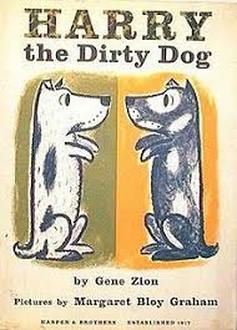 ~ by Amanda Smith As a substitute teacher I often walk into an emergency, with lesson plans drawn up quickly by someone whose mind was in a much more urgent place. On one such a day, the art teacher left me, in her words, “sketchy plans” – most of which involved students finishing current projects followed by open studio. Now, I’m all for open studio and free draw, but first grade had no projects to finish first. That meant 45 minutes of free draw: The definition of chaos. Thankfully, I had a planning period. And an ally in the school librarian. After thinking for a second or two, she pulled Harry the Dirty Dog by Gene Zion off her shelf. “You know,” she said, “kids love dogs. And they always enjoy Harry’s adventures.” Together we studied Margaret Bloy Graham’s illustrations, and a lesson plan was born. Fast forward to the first-grade class. I read the book. The kids were delighted. Then I held up Harry the Dirty Dog. “We are going to draw Harry,” I said. Shock and mayhem. “What!” “We can’t draw like that!” “That’s impossible.” I turned a deaf ear to the protests as I handed out a sheet of paper with a rectangle already drawn on it. I explained that we would have to work together to draw Harry, as it is a step by step process. Then the students and I drew Harry using the parameters of a rectangle. As their dog drawings took shape, their joy was contagious. And here’s the thing: even though they all followed my instructions, not one of the dogs looked the same. We had skinny, long nosed dachshunds, and pudgy, round nosed puppies. We had droopy eared dogs and shaggy tailed dogs. Boy Harrys with spiky collars and girl Harrys with pink bows. Every student loved their own Harry, and was amazed that they could indeed draw like that.
Here’s what I learned by drawing Harry, and how it pertains to writing:
3 Comments
 This week's throwback blog was first posted in 2021 as part of our Road to Publication series and is chockablock with information about preparing your work for publication. Welcome to RETRO SUMMER!  ~by Amanda Smith So, you wrote something. And now you wonder what the steps are for getting it published. First of all, congratulations! Writing on a consistent basis, to the point where you have a book, is a huge accomplishment. (If you want to write children's books and aren't sure where to start, this blog by Kelly is for you.) Writing a book, however, is only the first step. Sending a freshly written manuscript to an agent or publisher would be like asking Paul and Prue to judge a cake after you had only gathered the ingredients. Here are some basic steps towards publishing: Critique Partners: You need someone else's eyes on your work (not family!). Ideally your critique partners should be up to date on the current market and knowledgeable about writing. They will look at content, structure, plot and character development, language use and, if you need, line editing. It is imperative to have someone else read your work. Sometimes we get so caught up in the excitement of a new project, or have read the same words so many times we don't see the plot holes, unclear details, or glaring mistakes. Where to find critique partners? SCBWI Local writing organizations Online groups such as Kidlit 411, Storystorm, Children’s Book Authors & Illustrators, 12X12, to name a few. Craft workshops and courses Revisions: If your critique partners are worth their salt, you will receive lots of revision notes. Depending on the depth of the notes, you will have to revise or, in some cases, even rewrite. Regardless of the scope of revisions, you will likely have a couple of critique-revision rounds. Do not skip this step! It is during this phase that your work continues to mature and become the best it can be. It is hugely rewarding to dig deep and polish away the rough edges of your story. Beta Readers: (Not necessary for picture books) After critiques and revisions, you need Beta readers, who consist of readers the age of your intended audience or readers deeply familiar with your genre (think teachers, librarians). A beta reader questionnaire is a helpful tool for gathering focused feedback. Another round of revisions will likely follow beta readers. Publishing choices: Once you have completed these steps and you feel that your work is ready to send out, you need to decide whether you want to take the traditional publishing route or explore independent publishing? The rest of today's post will focus on traditional publishing. Next time we will learn about independent (self) publishing. Make sure you know the pros and cons of each option. If you choose traditional publishing, you should know that it can take months or even years. Most of the bigger publishers are closed to unsolicited submissions and you need an agent to represent your work. Some publishing houses however, do accept unagented submissions. Books, such as THE CHILDREN’S WRITER’S & ILLUSTRATOR’S MARKET, can provide guidance as to which publishing houses are open to unagented submissions. Always check the publisher’s website for their latest guidelines. While you can certainly do research online and through publishing trade journals to find publishers who are open to unagented or unsolicited manuscripts, it is very helpful if you have a more personal contact with an editor at the publishing house. One of the best ways to make this connection is to attend a class or workshop taught by the editor. Also, editors who attend writing conferences will often accept unsolicited submissions from conference attendees for a limited time, so be sure to look into this possibility when attending these events. Always do your research to be sure a specific publisher publishes the genre/age level you write. Agents: A good literary agent will help you polish and edit your story, send submissions to publishing houses, negotiate contracts, and handle advances and royalties. They are super knowledgeable about the industry, and know what editors are seeking. Your agent is your ally and business partner. Therefore it is important to carefully research agents, not only for what genres they represent or what their interests are, but also whether they will be a good match for you. Once you have narrowed down agents you would like to approach, you need to query. Places to research agents: SCBWI The Book Agency websites Manuscript wishlist (www.manuscriptwishlist.com/) #MSWL (https://www.manuscriptwishlist.com/) QueryTracker (querytracker.net/) Publishers Marketplace (https://www.publishersmarketplace.com/) Some writing websites also offer a treasure trove of information in the form of agent interviews and guest blogs. A few to browse are http://www.literaryrambles.com/, https://www.pbspotlight.com/, and The 12x12challenge Most agents are active on social media Acknowledgements of books you have read Queries: A query is a letter in which writers pitch their work and introduce themselves to an agent. It is a business letter that follows a specific form. Stay tuned for a guest blog regarding query letters by the Query Godmother, Kris Asselin, later this month. Queries are used for picture books, both fiction and nonfiction, as well as all other fiction. Nonfiction writers send a cover letter, proposal with outline, and some writing samples. Each agent or agency has their own rules regarding submissions. It is very important that you read and follow each specific agency's submission guidelines. Not only does it streamline the process for them, but it also reflects well on you, their future client, and your ability to take direction. Be prepared for several rounds of querying. If an agent would like to represent you, they will contact you and usually schedule a phone call with you to further discuss the details. Remember, not only is the agent interviewing you to see whether they want to take you on as a client, but you are also interviewing the agent to see whether they will be a good match for you. Once you have received an offer of representation and contracts have been signed, you and your agent may go through another round of revisions before they submit your manuscript to publishers. There might be several rounds of submissions before you receive an offer for your book. At this point the process is out of your hands. You have baked your cake to perfection. You've trimmed and filled and frosted. You've decorated and delicately flavored. Editors, acquisition boards, and marketing departments are your proverbial judges, and once your delectable offering hits the right palate, you will get your Hollywood-handshake: A published book!  Boogie on down to the other two posts in this series, about Independent Publishing and Writing a Query Letter. Catch you on the flip side! 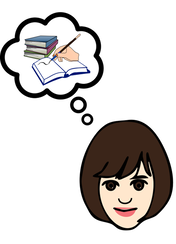 By Kelly Carey (reposted from December 2018) Often, when a family member, friend, or acquaintance learns that you are a children’s writer they comment back, “I’ve always wanted to be a children’s writer,” or “I’ve written a children’s book too”. As a seasoned member of the KidLit community you will want to be helpful and encouraging while still providing realistic and practical advice and information. The following blog is a post that you can share with folks you meet who want to become children’s book writers. Share it as a way to kick-start their writing journey and provide them with the first step information every writer needs to move from thinking about being a children’s writer to becoming a children’s writer. Becoming a Children’s Author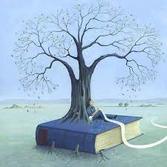 The dream of becoming a children’s author is a wonderful bubble that floats into the heads and hearts of many creative people. The trick is to take that dream and make it a reality. But how? There are three key first steps that every dreamer needs to take in order to kick start their writing journey and move it from a thinking about phase to a doing phase.  Step One: Write The first step to becoming a children’s author is to write. This may seem like common sense, but this is the point where many writing dreams sit stagnant. Aspiring writers may think about a story, and have a desire to be a writer, but often they will not take the time to sit down and put pen to paper or fingers to keyboard. To become a published writer you have to sit down and write. It can’t be on a whim or as a hobby. It has to be a real endeavor. Until you decide to make writing a priority, everything and anything - kids, family, chores, appointments, friends - can and will derail your efforts and interrupt your progress. Think of writing as a job that requires your undivided time and attention. To put true intention into your writing ambition, layer measurable goals into your dream:
For help setting your writing goals check out the posts under the Writing Goals section of the 24 Carrot blog archives.  Step 2: Find Your Tribe Writing can be a very solitary business. You’re not working for a company. There is no boss or co-worker. It is you alone with a laptop or a notebook. BUT you cannot work in a vacuum. You will need a group of fellow writers on your journey for the following reasons:
There are some practical ways to find your writing tribe. For example:
Engage in the community of writers in order to find valuable critique partners and a support system. For more help finding a writing tribe, check out the posts under the Writing Community section of the 24 Carrot blog archives. 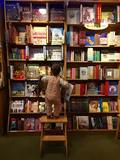 Step 3: Read There is a difference between reading a book as a reader for enjoyment and entertainment and reading a book as writer. Readers will enjoy a book, while writers will study why a book was enjoyable. In order to become a published writer, you need to read like a writer. There are three primary reasons why writers read in their genre:
For more help becoming a writer who reads, check out the posts under the Read section of the 24 Carrot blog archives.  If you have been thinking about becoming a children’s writer take these first steps. Write, Find a Tribe, and Read. Good Luck on your journey!  Guest Blog by Ellen Mayer All picture books are works of collaboration. But with Leaves to My Knees, I had an extra-special helper: my young granddaughter. Elise was three-and-a-half years old when I first brought her in as a collaborator. A beta reader for this newly published book, she is now a first grader. 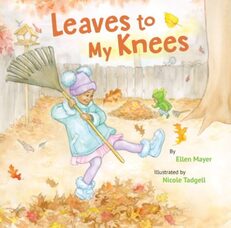 The Math Makes Sense Leaves to My Knees is a playful STEM story about a little girl, Camille, who is determined to rake a pile of leaves all the way up to her knees to jump in. In the story I wanted to demonstrate how young children, before they use formal units of measurement like a ruler, measure by comparing sizes with their own bodies in everyday activities. Elise at age three-and-a-half helped me “test out” the use of the math ideas on measurement and comparing sizes in my polished draft. As we raked leaves together in the backyard, I slipped in story character Camille’s mathematical thinking. How about raking a pile all the way up to your knees? I asked. The prospect not only delighted Elise, but the thinking felt true and natural to her, and soon she was chatting about the progress of the pile up her legs, just like story character Camille. She was also interested in comparing the size of her little toy rake against the big grown-up rake of her grandfather. For this young child, the math in the story made sense. Clarification Is Needed In the fall of 2019, I submitted the manuscript to the publisher. After I signed a contract for the book in the spring of 2020, Elise began to help me with revisions. While zoom readings during the beginning of the pandemic meant the loss of the lap, this technology did afford me a clear view of Elise’s four-year-old face, and I was able to make note of her expressions and body language as I read the text to her. Before the reading, I said: Elise, there are no pictures yet. You’ll just have to imagine them for now. But I’ll read you the words. She listened intently as I read through the entire text. What do you think? I asked. GOOD! she proclaimed. Even without the art, the story kept her attention – and elicited smiles. But I noticed one point where Elise furrowed her brows. When Camille sets out to rake leaves all the way up to her knees, she hoists her rake up onto her shoulder and does so “Because I mean business.” Elise was clearly drawing a blank at the idiom. Is “I mean business” kind of confusing? Should I change that a bit? I asked. Yeah. How about if I say: “Because I am serious––I mean business!” That’s good, she said. Of all the idioms in the story, that one needed a little explication for this four-year-old. Reconsider a Character Months later, a PDF arrived from publisher Star Bright Books with illustrator Nicole Tadgell’s full-color art in it. After reading it aloud to Elise, my beta listener paused thoughtfully and asked: You know, Mimi, Jayden doesn’t say anything. How come? That gave me pause. She found it odd that the goofy and playful two-year-old brother Jayden didn’t say anything. I never deliberately intended for him to be silent. Hmmmm. My publisher was getting the files ready for the printer, but I had to email the editorial team. If it's not too late, I have a suggestion for one more text edit. This suggestion is prompted by a comment made by my granddaughter when I read her the story recently. She pointed out – with some concern – that Jayden doesn't say anything in the story. I suggested that we have Jayden join in with Daddy when he cheers Camille on with a GO! as she readies herself to jump into her leaf pile, now up to her knees. Star Bright Books concurred. One of the editors wrote back: It’s always fascinating to learn what children can see that adults don’t. Thank you, Elise, now Jayden has his own “voice.” 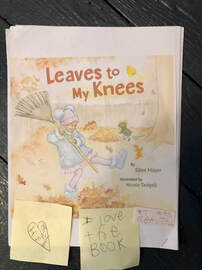 A Starred Review I learned that the reception of the story only improved with repeated readings. I watched my granddaughter sitting on the sofa beside her grandfather as he read aloud from the pages of the PDF, her face passing through a wide range of emotions as Camille suffers ups and downs in her leaf-raking project. When they got to the page where Camille steps into her hard-earned knee-high leaf pile, confirming that it indeed reaches to her knees, and shouts “TA-DA!”, Elise sprang up on the sofa and raised her hands high above her head in victory, just like Camille, and shouted joyfully: TA-DA! Months later, she insisted that she had “requested” that Camille say “TA-DA” back in the editorial stage. But then, that’s what happens in collaboration, isn’t it? We often forget who contributed what. When she was six years old and a rising first grader, Elise wrote out her review. To help her elaborate on her stickies, I said I wanted to “interview” her about each page. With much eagerness and solemnity, she pulled up a chair next to mine. As we slowly examined each page I asked her what she thought and she provided detailed feedback. She loved what the kids were wearing (it’s a Stegosaurus hood on Jayden), Jayden was so funny, her favorite image was the cover because Camille looks so happy. Elise identified with Camille, and she thought her peers would, too. They would understand how Camille feels and they’d feel the same way in that situation. Like, it’s a good book because it’s kind of like you’d be if you were Camille… I think the kids in my kindergarten class would’ve liked the book because it’s like them. 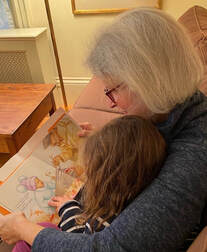 Ready to Read Soon after Elise started first grade, I had a surprise for her. It was the “F&G”, the folded and gathered advance pages of the book, before it was bound. It was a glossy splash of fall color, all ready to read, with real pages to turn. She was the person I most wanted to share it with. I jumped right in and started reading. After several pages, she put her hand over mine. She had a surprise for me, too. STOP, MIMI! she said. Let me read. I’ll read this page. Since I couldn’t see very well through my tears, I let her take over. The book had come far in those last three years. And so had Elise. Lessons Learned From a Young Beta-Reader Quite apart from the joy our journey together afforded me, getting reactions from a real child helped my writing process:
Each child and each book process is unique. For myself in this case, I came away with some thoughts about how to incorporate a young child into the making of a picture book:
You will never sell a book by claiming that your grandchild loves it, but working with a young reader in your family to critically evaluate your manuscript can make it stronger and help it find publishing success. I hope the collaboration I enjoyed with my granddaughter, as I worked on Leaves to my Knees, makes you think about using your own young beta-reader to improve your work. Leaves to My Knees, illustrated by Nicole Tadgell, and published by Star Bright Books in October 2022, is Ellen Mayer’s ninth book for children and her third math-infused one. Before focusing on writing for children, Ellen was an education researcher at Harvard’s Graduate School of Education, studying family engagement in young children’s learning, and an early literacy specialist home visitor with the Cambridge Public Schools in Massachusetts. To learn more about Ellen and her various books for children, visit her website at www.ellenmayerbooks.com. To learn more about illustrator Nicole Tadgell visit her website at http://nicoletadgell.art/. 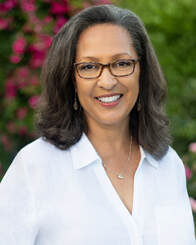 ~Guest blog by Janet Costa Bates I call myself a writer, but I’m not sure why. I should call myself a ‘reviser,’ since, like most writers, I spend much more time revising manuscripts than I do writing the first draft. Writing the first draft is exciting, but the real magic happens during the revision process. My first step in the revision process is to do absolutely nothing. I figuratively put the manuscript into a drawer and then work on something else. When it’s time to look back at it, I can do so with fresh eyes. Are there plot holes and how can they best be fixed? Are the characters true and consistent? If not, does something happen in the story to drive the change in their behavior? Is there fluff to be cut? Cuts can be as small as individual words or as big as characters, sub-plots, or description. I often pick a random number and make myself cut that number of words from a manuscript. There’s safety in knowing I can put any of the words back in, but I rarely do. I also go through the manuscript for grammar - NOT my favorite part. After all, my rule for commas is ‘random.’ Although I try to get the manuscript into decent shape, I’ve learned not to obsess too much. I now know there are magical people called copy editors who have much more grammatical talent than I do. Some revisions are routine and fairly quick. Other revisions are not at all routine, not at all quick, but totally worth it. Let me share a few examples with you. 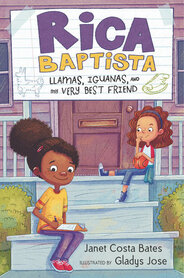 Years ago, I started a manuscript as a picture book, but eventually realized, not only was it too long, it didn't have the visuals a picture book required. After revising, I tried it as a magazine story. It received some interest from a major children’s magazine but, even though I’m pretty good at accepting editorial suggestions, I couldn’t quite wrap my head around some of the changes they were requesting. At a retreat, someone suggested it would be better as a middle grade, so I stretched it into a novel. With that story, I got an agent. My agent spent years - yes, years - trying to sell it. The phrase ‘raving rejections’ started to make sense to me. Editors gushed over the characters, expressed their love for the voice, but ultimately, they all said no to the story. At a Whispering Pines Retreat, I had a critique with Christian Trimmer, then a Simon and Schuster editor. Similar to the others who had rejected the manuscript, he said the story had great characters, great voice, but the plot wasn’t working. He followed that up with ‘but you have a great set-up for a chapter book series.’ My then agent still wanted to try it as a middle grade, but eventually, after a friendly parting of the ways with that agent, I went with Christian’s advice. LLAMAS, IGUANAS, AND MY VERY BEST FRIEND, illustrated by Gladys Jose, is the first in the Rica Baptista chapter book series. It will be released by Candlewick Press on October 25 and is a Junior Library Guild Gold Standard Selection. I’m looking forward to its November 9th launch at An Unlikely Story. 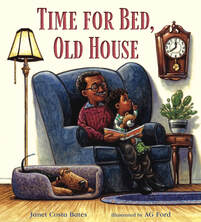 A process that took even longer was a picture book manuscript I started in 1999. I went to my first NESCBWI Conference, met an editor, and submitted the manuscript. She gently turned it down with a helpful note explaining why. That was the first of many rejections it received. I spent a few more years revising it. Again. And again. More rejections. Finally, I put it in a drawer – for about ten years. (I don’t recommend putting a manuscript in a drawer for ten years, but, well, sometimes life happens and you don’t get a chance to open up that drawer for a while.) Eventually, I took that manuscript out, greatly revised it, and sent it to Andrea Tompa of Candlewick, whom I had met with at a conference. She said yes! TIME FOR BED, OLD HOUSE, illustrated by AG Ford, was released in 2021 and has received several honors. It was well worth the wait and the revisions. (Side note: That first editor to whom I sent a very early version of TIME FOR BED, OLD HOUSE, was Mary Lee Donovan of Candlewick. As Andrea’s boss, she gave her the nod to acquire it. Publishing is a small world, my friends.) So, look at your manuscript with fresh eyes. Find the plot holes, strengthen the characters, and cut the fluff. Putting time and effort into your revisions will make the magic happen. 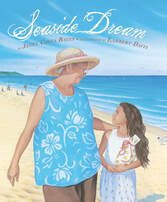 Bio Janet Costa Bates is the author of LLAMAS, IGUANAS, AND MY VERY BEST FRIEND (Candlewick), the first book in the Rica Baptista chapter book series and a Junior Library Guild selection. TIME FOR BED, OLD HOUSE (Candlewick), received four starred reviews, was listed on several 2021 best books lists, and was an NAACP Image Award nominee. SEASIDE DREAM (Lee and Low), received a Lee and Low New Voices Honor Award. Find her at janetcostabates.com or on Twitter/IG @jcostabates. ~ Having an agent isn’t everything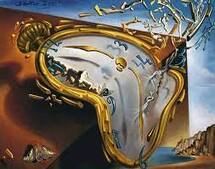 Soft Watch at the Moment of First Explosion by Salvador Dali. Soft Watch at the Moment of First Explosion by Salvador Dali. ~ Guest blog by Samantha Gassman In January 2020, I was flying high. After 5 months of querying literary agents with my picture book manuscripts, I had an offer of representation in hand and my first book on submission with publishers. But as the months dragged on, it became clear that my hope of seeing my book in print was not going to happen. During the course of 12 months, my first manuscript was rejected by 30 publishing houses — big ones, small ones and everything in between. Here’s what I learned: 1. Rejection doesn’t stop after you have an agent When I received my first offer of representation, I was equal parts thrilled and relieved. I was ready to be out of the query trenches and into the big time! Instead, I traded in the “your work isn’t the right fit for me” rejections from agents for “It’s cute but I’m afraid it didn’t quite capture my attention as I was hoping. I’m afraid I’m going to have to pass” rejections from editors. Ouch! Not only do the rejections continue after landing an agent, publisher rejections sting even more. When I was querying agents, I convinced myself it was “just to see what would happen.” Like a schoolchild picking daisy petals: maybe they’d like me, maybe they wouldn’t. But when a publisher rejects your work, they’re saying it’s not worth their time or money to publish your story. On that note... 2. Acquiring a book is a risk When a publisher acquires a book, particularly a picture book, the publisher is taking a huge risk on your book’s ability to compete and perform in an over-crowded marketplace. During the acquisition process, there will be a Profit and Loss (P&L) analysis performed by the editor or financial specialist. After all, publishing is a business, not a charity. While writing for children is often portrayed as a whimsical process, if your cute story isn’t worth the manufacturing, design or overhead costs, a publisher will pass. In my case, the feedback from several editors was exactly that: “The energy is great, but the story doesn’t hit high enough to compete in the market right now.” 3. Agents have a really tough job Agents get paid when the author gets paid. In other words, after your book is acquired, contracts are signed, advances are paid (or not) and royalties come in. Because publishing is such a slow industry, this means your poor agent doesn’t see any cash for 1–3 years AFTER they sell your book. They weren’t paid to read your query, offer their revisions, or go back and forth with you on edits. They do all of that in hopes that your book will be acquired by a publisher and fly off the shelves. Even then, most agent commissions are only 15–20%. On a $17 hardcover book, that’s only a few bucks. I will be forever grateful to my first literary agent for her perseverance and patience as we received rejection after rejection. Especially since our agreement was based on her representing this one manuscript, and she had all her figurative eggs in my one basket. 4. Taking a critical eye to your work is important If you remember nothing else from this post, remember this: Read your manuscript like a publisher. Regardless of what kind of book you’ve written, you must be well- read enough in your genre, age group, etc. to know where your book fits into the market. What is unique about your book? Why does there need to be another book on your topic? What value does it provide the reader? After the doors to my publishing dreams were closed for this manuscript, I re-read it with the editors’ comments in mind. You know what I found? They were right. ARTICHOKIE KARAOKE (great title, right?) is a really cute book. The rhyme style is catchy (similar to Hip Hop Lollipop) and kids would appreciate the premise of being stuck in a boring grocery store with nothing to do. But, as the 30 editors noted in their own way, it is too “slice of life.” The conflict and resolution are too tame, and without the rhyme, the story falls flat. Maybe if I had considered these things before, I could have revised it to be more compelling. Upped the stakes. Increased the friction. Landed the deal. Take a look at your story as objectively as possible and ask yourself those tough questions before it goes on submission. If you know in your heart it could be better, make it better. There is no need to rush. Seriously. Don’t rush it.  5. Keep trying Although my first attempt at being a published author didn't work out, I tried again with another agent in 2020. Just before my rainbow baby was born, my new agent and I received an offer of publication for my picture book, DEAR RAINBOW BABY. It comes out on National Rainbow Baby Day – August 22, 2022, courtesy of Clear Fork Publishing. P.S. It’s also my rainbow baby’s second birthday that day – how perfect is that!? After my first book was rejected by 30 publishers, I felt completely deflated. The contract with my first agent was terminated and even though there are still a handful of publishers who never responded, ARTICHOKIE KARAOKE will likely never be traditionally published. At least, not in its original form. Knowing what I know now, I may dust it off one day and revise it, and try again. Or maybe, elements of the story will find their way into a completely new piece. Or maybe, I’ll borrow the rhyme scheme to write a new story. It doesn’t matter — the point is, we learn more from our failures than our successes. Don’t give up!  Samantha Gassman is a children's book author, Air Force veteran, military spouse, and mom to two kids and two cats. She is the author of DEAR RAINBOW BABY (Aug 22, 2022) and PEANUT AND BUTTER CUP (2024). Visit Samantha’s website to learn more. Preorder DEAR RAINBOW BABY here.  ~By Megan Litwin A former K-2 teacher, I’m a big fan of schedules and routines. I know how important it can be to have a structure to the day you can count on, yet one that also leaves room for organic detours. Schedules can be powerful - and comforting - for children and adults alike. Of course, life hasn’t made it easy to keep to any sort of schedule lately. But this January, I felt determined to start off on the right foot. 2022 brings with it my debut picture book, and I could not be more excited! At the same time, that means I’ve found myself with extra balls to juggle and new roads to navigate: a website, a wonderful co-marketing group, planning for events and school visits. All very good things indeed. But all NEW things, too. Now, besides time to write (to daydream, draft, revise, and more), I need a chunk of time just to keep up with being an “author.” No matter where any of us are on this journey, there is a certain amount of attention that needs to be paid to the business side of things. But how to make time for these different roles, without dropping any balls or feeling frazzled? I needed a comfortable routine I could count on. First, I thought about the time frame of my work day (something that looks different for everyone). My best work hours are absolutely when my kids are in school. Then, I thought about the flow. I knew I wanted to fiercely protect my writing time, no matter what got thrown my way each day. So actual butt-in-chair writing is the morning’s first work. I’ve committed to at least one hour a day for that. Or more! But setting a realistic minimum helps me stay true to that goal. If I’m in the groove and really deep into the work, that could stretch by hours – and I love when it can. Or I might write for just that hour and then do something else writing-related, like critiques. There is a certain amount of open-endedness built in. And a whole lot of morning coffee… No matter how it’s going, by the time lunch rolls around, it’s time to switch gears to author business. Choosing ONE focus per day helps, and that focus varies with deadlines and such. I might work on my newsletter, write reviews, or make pins on Canva (where I definitely can fall down the rabbit hole…). But when these tasks are not creeping into my writing/craft time, I actually enjoy them! After the writing and author work, I scheduled some reading time. Yes, I said “scheduled reading” – because it’s important to me, and my routine should reflect that. I might read a new pile of picture books, some poetry, or a beautifully crafted chapter book. My children get home around 2:30, so scheduling my reading to coincide with that allows me to model my commitment to reading AND encourages them to join me with their own books. Win-win! And finally, we all have many more roles and responsibilities other than writer/author/reader. I might have an appointment, get called to substitute teach, or have a sick child. And even on a perfectly organized work day, it is my role as Mom that is most important to me, and that one requires most of my attention once my kids are home. At that point, I tuck the work away and promise to return to it tomorrow, just like I would if I were leaving the classroom or office. Schedules work best when they are flexible structures. After an inspirational virtual webinar with Bethany Hegedus at the Writing Barn, where she talked about setting goals for each quarter of the year, I realized that maybe schedules could also be seasonal structures. I decided to call this a WINTER work schedule, and I already felt a lot less pressure to make it perfect. It may change when spring arrives, and then change again to fit the cadence of my summer days. But it suits me right now. It makes me feel full and warm – because I am making space for what matters to me, day in and day out, as this new year begins. And…it is an acronym!! Because, after all, I’m forever-at-heart a primary school teacher! A WARM Winter Work Schedule: Writer Author Reader Mom (*etc.) No time slots. No word counts. No pressure. These are simply the daily roles I want to spend time on, and in this order. What kind of an overarching structure works for YOU? What does your “winter writing season” look like? I hope it is warm and wonderful and full of whatever you need…right now.  Megan Litwin is a children's book author and regular contributor for 24 Carrot Writing. Her debut picture book TWINKLE, TWINKLE, WINTER NIGHT, illustrated by Nneka Myers (Clarion Books) will hit the shelves October 2022. To learn more about Megan visit her at www.meganlitwinbooks.com/. 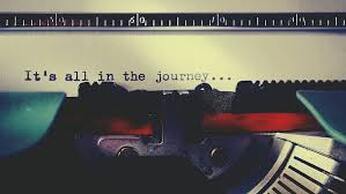
Thank you to 24 Carrot Writing for asking me to blog for them today. It’s a pleasure to be here talking about one of my favorite things: The Query Letter. A bit of background: It’s no secret that I’d queried a lot in the early 2010s (I’ve written about it in a bunch of places -- Articles about Querying and Writing - Query Godmother). After a few false starts, I signed with my third agent in the summer of 2013. This past summer, after seven years with the same agent, we parted ways—and I was honestly feeling like a bit of a failure. I’d been hoping for feedback on a manuscript and wasn’t prepared for my agent to be downsizing their list. In the middle of 2020, I took it really hard. All this to say that anyone can be in the query trenches. Writing a query can be scary. Remember, a query letter is a tool. It’s a way to put your words into the world. Don’t overthink the query letter. It’s manageable. There are parts to it. 1. Introduction (and opening paragraph): Sometimes this is called the “hook” part of the query. Include the title, the word count, the target age, and the genre of the book. A short tagline (elevator pitch) can be included in this section as well. It is not mandatory, though. If you have something personal to add, like that you met the agent at a conference, or took their workshop, do that here. If you don’t have anything personal, don’t force it. 2. Book section: Think of this as your back cover copy. This is the most important part of the query. Be specific, but brief. Try to express how your book is different than others. Use specificity about character goals, stakes, and motivations. This section should be the longest—after all the query is about your BOOK. Make sure you are answering these questions in this section:
Something about yourself and your expertise. What makes you the person to write this book? If you have any relevant published works, mention them here. Keep this part business. Don’t include things about your family or hobbies. Query strategies:
I’ll be honest, I have yet to sign with a new agent. However, my request rate is over 20%, so I feel like my query letter is working, and there are several people considering my work. Keep track of this sort of data, so you know when to revise and/or move to the next manuscript. Jumping into the querying pool can help you put aside your fears and anxieties about your work. Querying is forward motion. It is taking control of your career. Know yourself and what works for you. I wish you all good luck in 2021.  Bio: Kristine Asselin is the author of several works of children’s nonfiction, co-author of the middle grade novel The Art of The Swap, as well as the YA novels Any Way You Slice It and Falling for Wonder Boy. She loves being a Girl Scout leader and volunteering with the Society of Children’s Book Writers and Illustrators. She is a sucker for a good love song (preferably from the 80s), and can’t resist an invitation for Chinese food or ice cream (but not at the same time!). She lives in Central Massachusetts with her teen daughter and husband, and spends part of everyday looking for a TARDIS to borrow.  by Annie Cronin Romano You’ve heard the advice: read what you write. Do you write nonfiction picture books? Read hundreds of them. Are you a middle grade fantasy writer? Read all the fantasy MG you can get your hands on. Write dystopian young adult? You get the picture. Let me be clear. This is good advice. Solid advice. It is imperative to be aware of what is getting published in the area in which you write. It’s important to study it. What makes those books work? Why did it make it to the shelves? What is unique about the concept? But what writers often overlook is that it is just as important to nourish our reading souls as it is our writing knowledge. That means reaching for that book outside the genre in which you write and reading for pleasure. Grab that commercial book club novel. Dive into that mystery or psychological thriller. Itching to check out a sci-fi series? Go for it. Pour a glass of wine and crack the spine on that romance. I write picture books and middle grade, and I read as much as I can in both those areas. For quite a while, that’s all I read. But since working in a bookstore and a library for nearly a year, I’ve been reading a lot more YA and adult books of all stripes. I needed to be familiar with what was on the shelves beyond just the children’s sections. When customers and library patrons come in, I have to be prepared to offer tips and guidance in a broader range of areas. And—Surprise! Surprise!—I discovered I could learn a lot from those books that–despite not being the type of books I write--offered a window into strengthening my own writing, regardless of the genre. I found myself considering pacing, character development, plot, setting: the elements that are required in any story, inspired from a different perspective. I wondered how I could try different styles and points of view, how I could switch up my characters and make them more engaging, how I could play with setting and voice. I was still reading for pleasure, of course, but I realized that even though a book isn’t specifically a mentor text to what I write, I can still learn about the art of writing from reading it. Eureka! Of course, no matter what I read, I’m always enjoying myself. But often, I felt locked into a particular genre because it aligned with what I wrote. Now I read more outside my writing genres because it feeds my reader’s soul and, I firmly believe, makes me an even better writer. So yes, continue to read mentor texts and study the areas in which you write, but go beyond that, too. Make time to read whatever catches your fancy. Your inner reader and your thoughtful writer will thank you for it. 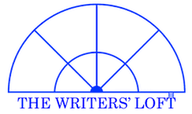 ~Hosted by Amanda Smith The Writers' Loft in Sherborn, MA is a community dedicated to helping writers achieve greatness. They have a quiet, drop-in writing space and a community room for special events or just hanging out. They are also on the cusp of releasing their third anthology, FRIENDS AND ANEMONES: OCEAN POEMS FOR CHILDREN featuring writers and illustrators from the Loft. Many of these Lofters also worked on the first poetry anthology AN ASSORTMENT OF ANIMALS. 24 Carrot Writing asked the illustrators about the experience of working on a joint project. This anthology is a collaborative project involving 30+ creative souls. What did you enjoy about working alongside other creatives? What was easy? What was challenging? In which ways did it stretch you? What aspects did you have to take in consideration as you created and edited your artwork? 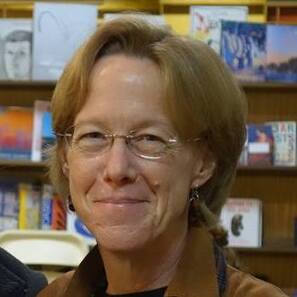 Priscilla Alpaugh: Working on the Anthologies was a rare chance to work with such a large group of artists. It was wonderful to see each other’s work and be able to share constructive criticism with one another. It’s a treat to read the poems that the Lofters wrote. So many talented writers! It’s energizing to know that everyone is working towards the same goal. It is always a challenge to combine different poems on one page or spread. I was lucky and got one of the easier combinations. In each case I went in with a pretty clear idea of what I wanted in the image. Starting with thumbnails for composition and then sketches for content led to a final sketch where I could also consider value. I typically combine watercolor and pencil digitally, but this time it was mostly all digital. To learn more about Priscilla, visit http://priscillaalpaugh.com/ 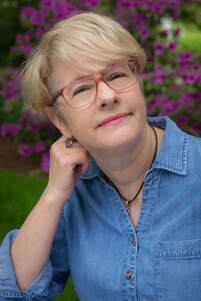 Leanne Leutkemeyer: I enjoyed the feeling of community. I love the energy and excitement of being in a room with creative people. I enjoyed being part of the team. This project introduced me to so many wonderful and talented writers and illustrators. The timing of this project was perfect for me. It took my mind off the world and let me escape into oceans, play with whales and stingrays, and make art. The Zoom meetings helped fight feelings of isolation. However, getting art direction from a group can be a challenge. It can be intimidating to sit shoulder to shoulder with artists you admire. In a meeting full of voices, it’s hard to catch and absorb all of the suggestions as they fly by. I scribbled many notes. It’s more challenging to have group input, but also exciting and inspiring to see the incredible work everyone was putting out. In which ways did it stretch me? I developed new painting techniques to work large and discovered different scanning techniques. I’m excited about the new photoshop skills I’ve picked up through this project. In the past I’ve always fixed mistakes on the illustration as I painted or started over till I got it right. It’s pretty mind-blowing to be able to add an extra tail on a stingray while painting and know that I’ll be able to take the earlier one out that wasn’t working, and not have to repaint the whole illustration. To learn more about Leanne, visit https://www.leanneluetkemeyer.com/ 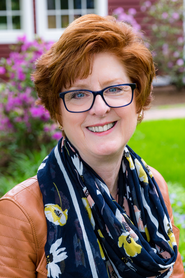 Deb O’Brien: The artists had several challenges in this anthology. We received a lot more poems this year, which meant several poems per spread. Not only did our illustrations have to support each poem, we had to make sure that the art and the poem fit on the page. Another challenge was the Corona virus. Normally, the artists and designers would get together several times to discuss color palettes, design, and layout. This time, we had to do it all via Zoom. We made it work, but it wasn’t easy. Some artists couldn’t even think about art. I was grateful I had this assignment; it gave me focus, direction and deadlines. I was able to block out the world and dive into my work. I’m very proud to be a part of the anthology and can’t wait to see the published piece. To learn more about Deb, visist https://deb-obrien.com/ What did you learn about yourself, your creative process, book-making, and/or marketing while working on the anthology?  Amanda Davis: I was honored to have the opportunity to illustrate several poems in this year’s anthology. It’s the first time my illustrations are appearing in a published children’s book alongside many other talented creators to boot! For this particular anthology, illustrators brought to life the fun and crazy creatures of the sea. I knew I wanted to garner a likeness to the creatures in the poems while also putting my own original spin on them. Typically, my process involves drawing from my imagination or from real-life models or scenes. Since I didn’t have access to real-life models of vampire squids or narwhals, I knew this part of my process was going to be a challenge. With the help of the Loft team, I learned more about properly using reference images, avoiding copyright issues, and finding creative ways to craft original models using materials such as clay. Because I was illustrating for publication, I also felt an added pressure to get it right. This meant practice, practice, practice and revise, revise, revise! I enjoyed working collaboratively with the other artists and design team who provided me with valuable feedback that helped polish my work. The whole experience was a learning process, and I’m grateful for the knowledge and patience of the Loft community. I can’t wait to share our beautiful, seaworthy collection with the world! To learn more about Amanda Davis, visit https://www.amandadavisart.com  Joy Nelkin Wieder: Working as a team was the most exciting and educational process in working on an anthology with other Lofters. I learned so much about marketing a children’s book from others on the team that I was able to apply everything I learned when my own book launched in January. Everything from writing up a press release, to making contacts at local bookstores and media outlets, to participating in book signings and presentations, to creating marketing materials such as flyers and posters. During the marketing of An Assortment of Animals, I took the lead in putting together art exhibitions of our original artwork from the anthology. Our framed illustrations were displayed at the Art and Frame Emporium in Westborough and the Hopkinton Art Center in Hopkinton. We currently have an online exhibit of illustrations with the Acton Memorial Library – check it out here: https://www.actonmemoriallibrary.org/events-programs/art-exhibition/ Visit Joy's website at http://jnwieder.com/ to learn more. 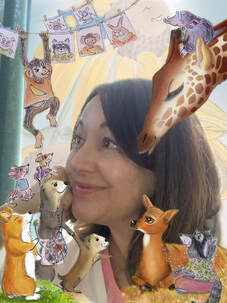 Doreen Buchinski: I was honored to design An Assortment of Animals. It was a wonderful opportunity and a chance to challenge myself. As a graphic designer, I’ve created brochures, logos, promotional materials, etc., but hadn’t explored designing picture books. I was excited and terrified of the herculean project ahead. Applying principals of good design to the book layout—like alignment, balance, repetition, contrast, type, and space—was priority. Tasks included: researching fonts, colors, and on-demand printing, managing art files, emails, edits, and file prep, while also completing my own anthology illustrations. Yes, there were days when the project felt overwhelming—but I stayed focused on each day’s priorities. With superb anthology editors, Kristen Wixted and Heather Kelly, the Writers' Loft founder, at the helm, the development and completion of the book was successful. Collaborating with talented illustrators and authors, and displaying their beautiful art and poetry on the pages of the book were experiences I will always treasure. Visit Doreen's website at https://www.doreenbuchinski.com/ What was your approach when you first received the poem(s) you were to illustrate? Walk us through your process. 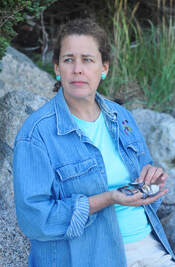 Sarah Brannen: For me, the first step was picking the creatures I was going to illustrate. I went back and forth with the editors as they sorted out who would make art for which poem. I specifically requested jellyfish and they were kind enough to make that work. I also thought I’d like to do sea glass. I was an avid collector as a child and I still have a jar of my very best pieces, which include even rare colors like yellow and pink. Kristen Wixted and I talked a lot about how to group the poems. It was her idea to do a spread of things found on the beach, so that I could do a trompe-l’oeil image of everything spread out on the sand. At the last minute Kristen asked me to illustrate the very last poem in the book, Sea Serenity. My most recent book, A Perfect Day, is set on the ocean and it opens with a very calm image of the ocean at dawn. We both felt that something similar would be perfect to close the anthology as well. I sketched a very old wooden lobster pot buoy that I’ve had since I was little, although I changed the colors to white, blue and green. It’s meant to evoke, in some way, the earth itself. Old buoys have numbers carved into them so I put “2020” on the one in the illustration. My web site is www.sarahbrannen.com.  Jodie Apeseche: When illustration assignments were divvied out, I was super excited. I felt that everything was in my wheelhouse-lobsters, cuttlefish, crabs, sea otters, seahorse and sea dragon-yup those would be fun. The tricky part was how to make my illustrations connect to the poems while keeping in my style of painting. For example, after reading Lobster Rainbow more carefully, I was faced with a predicament. I had not realized that I would have to paint 6 different colored lobsters. I couldn’t figure out how to do that without making a very cluttered illustration. Solution, I created a lobster grid a la Andy Warhol. Problem solving is such a big part of illustration and I owe gratitude to author, Jean Taft, for pushing me to that end. For more about Jodie, visit jodieapeseche.weebly.com or http://art-jam.net/ 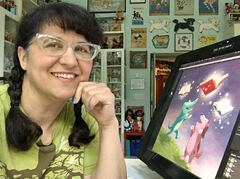 Liz Goulet Dubois: When I first received my poem from Lynda, I was surprised! I was expecting perhaps a short, pithy poem. What I received was an epic tale of a seal, underwater dentistry and a duplicitous shark! I approached illustrating this the same way I would approach a picture book. I distilled the text down to what I thought were the key scenes, and created individual sketched vignettes in pencil that could wrap around and enhance the text. The drawing was challenging also because of the scale differences in the characters depicted: everything from a blue whale down to a jumbo shrimp! After the sketches were settled and approved, I scanned them and colored them digitally, which is my usual method. Hopefully readers will be amused by the sight of a shark brandishing dental tools, and wearing a bib! To learn more about Liz, visit https://www.lizgouletdubois.com/ FRIENDS AND ANEMONES: OCEAN POEMS FOR CHILDREN is set to launch in November and is chock-full of whimsy, fun, and freaky animal facts that will delight children and adults. To learn more about the Writers' Loft visit www.thewritersloft.org/ and www.thewritersloft.org/anthology for information regarding previous anthologies.
|
Peruse blogs for advice and tips from KidLit creatives.
Categories
All
Archives
April 2024
Click to set custom HTML
Click on the RSS Feed button above to receive notifications of new posts on this blog.
|
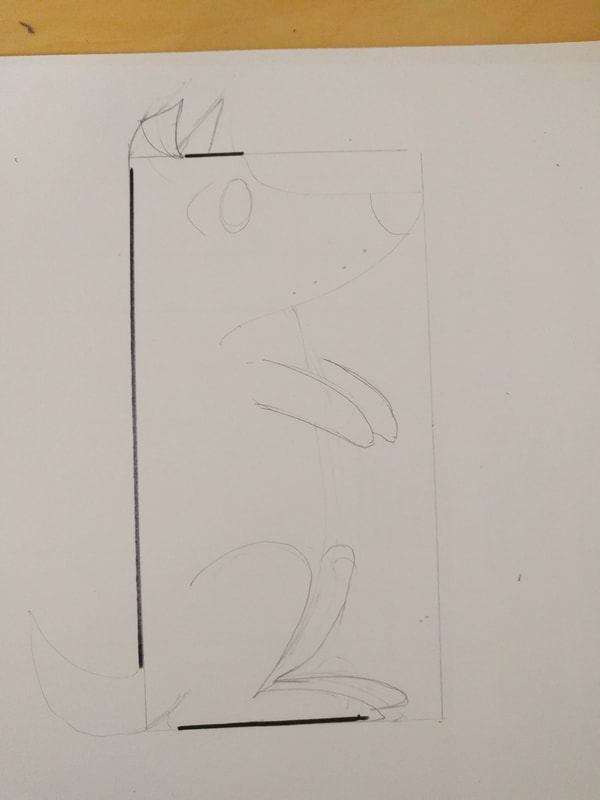
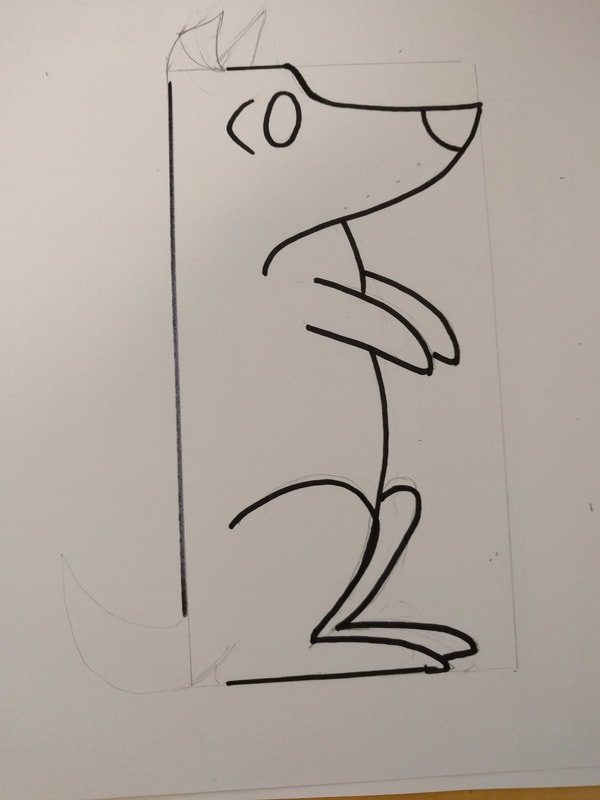
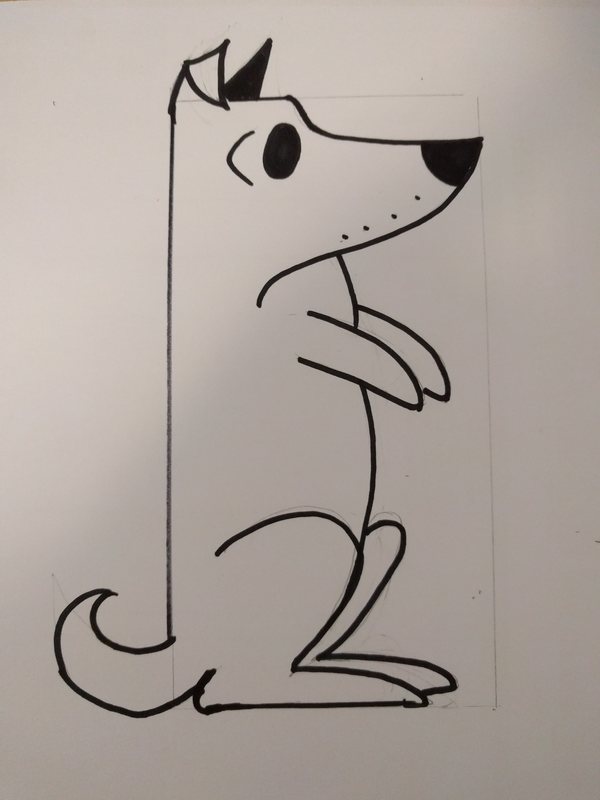

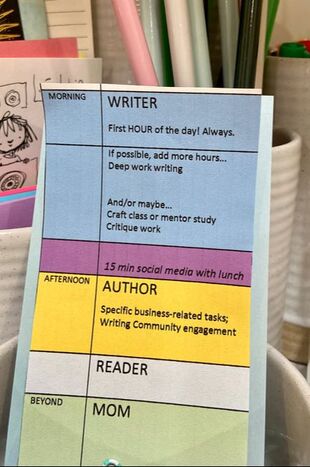
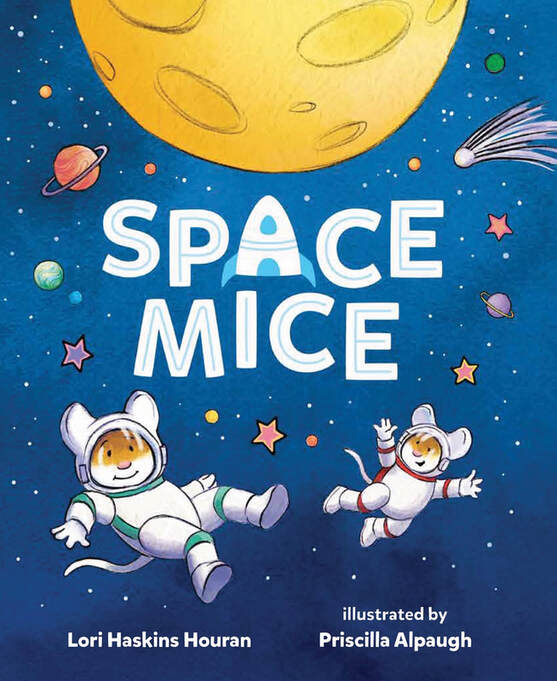
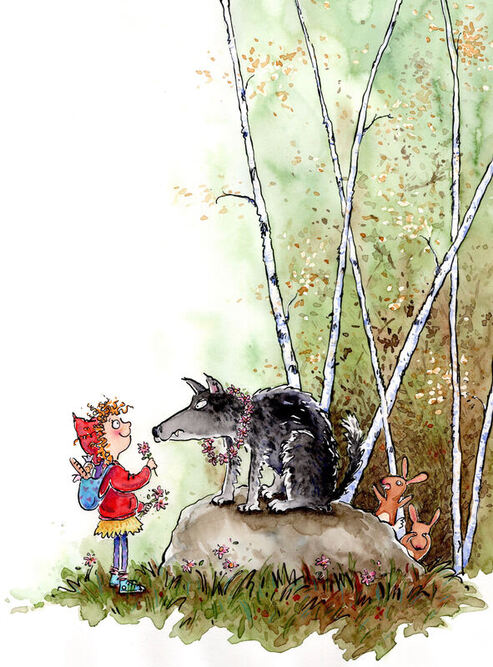
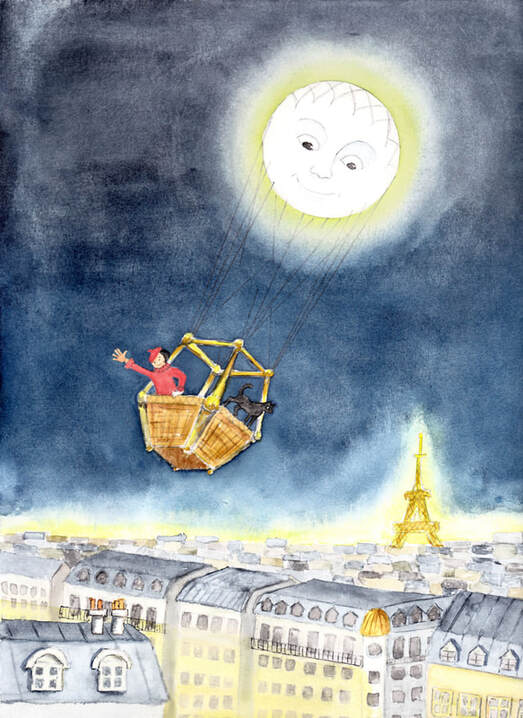
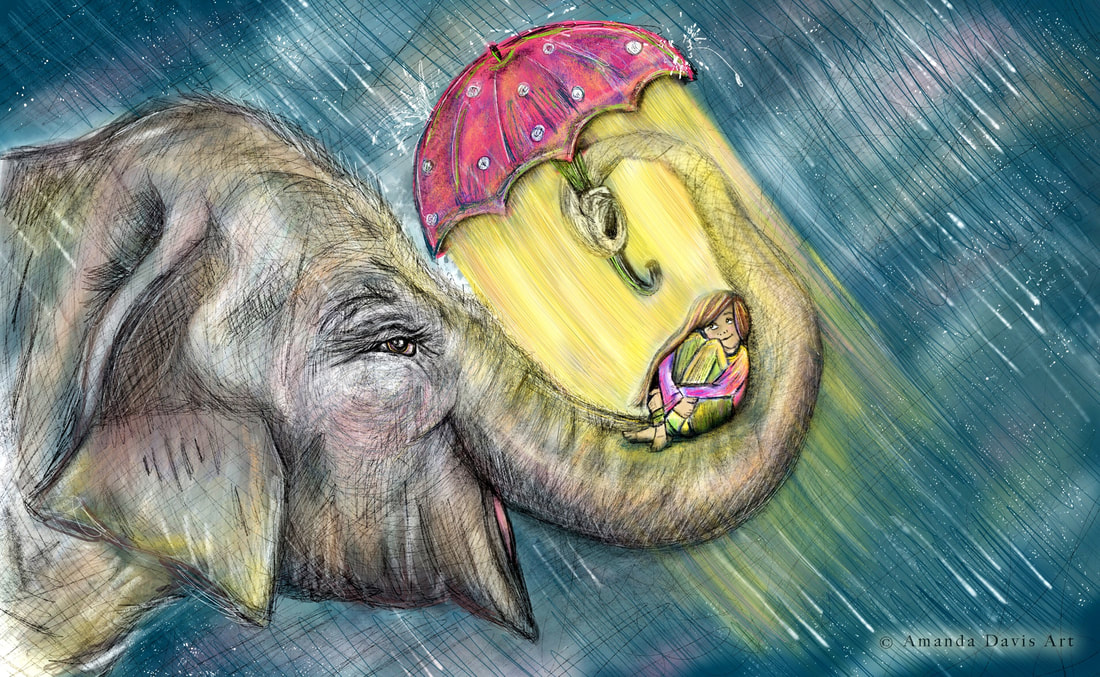
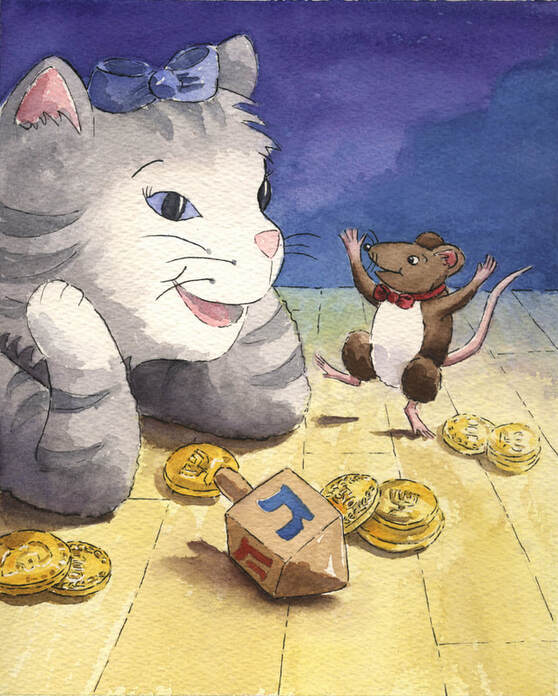
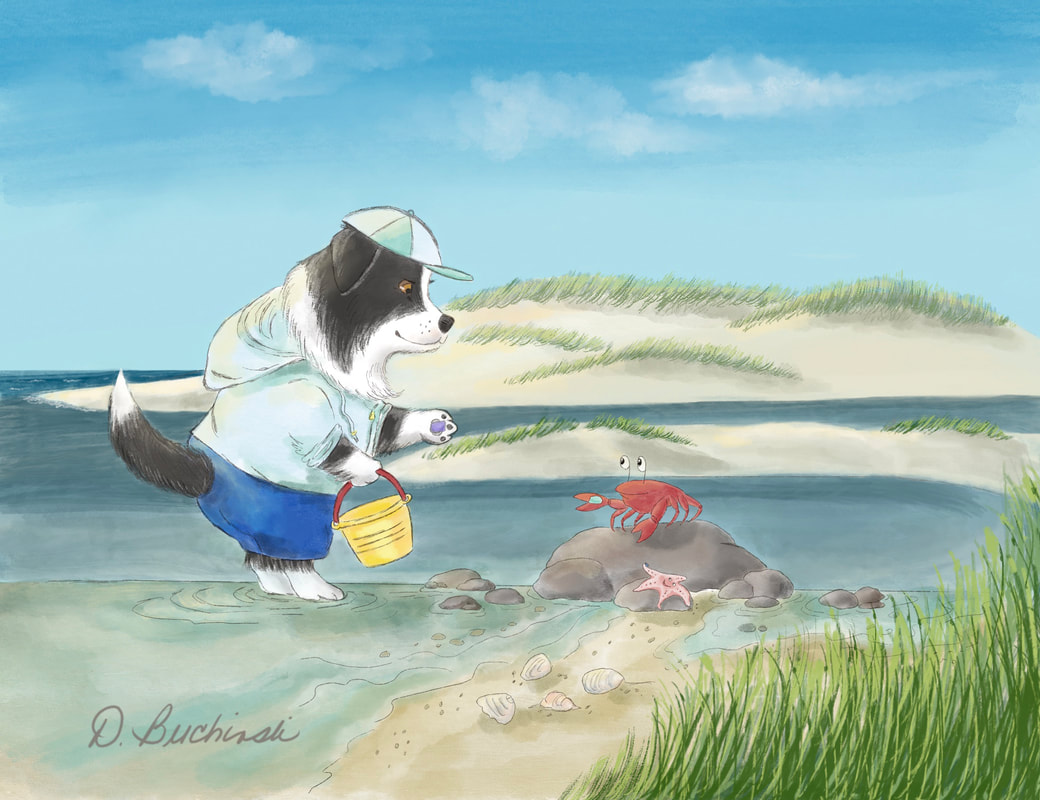
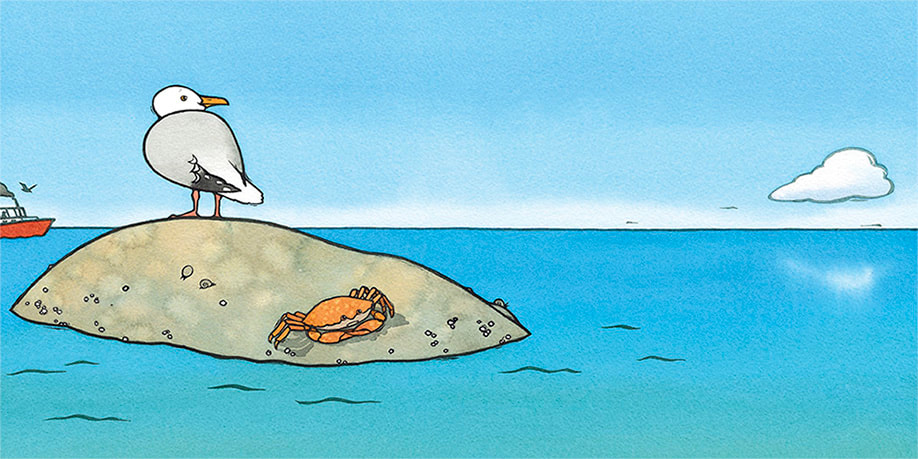
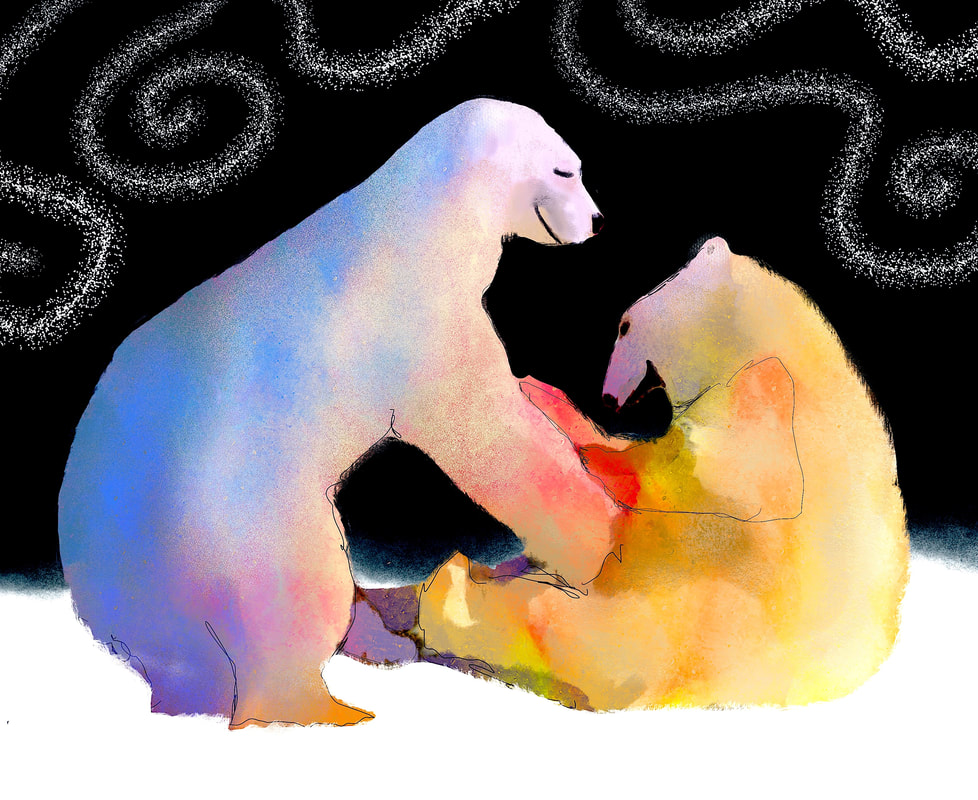
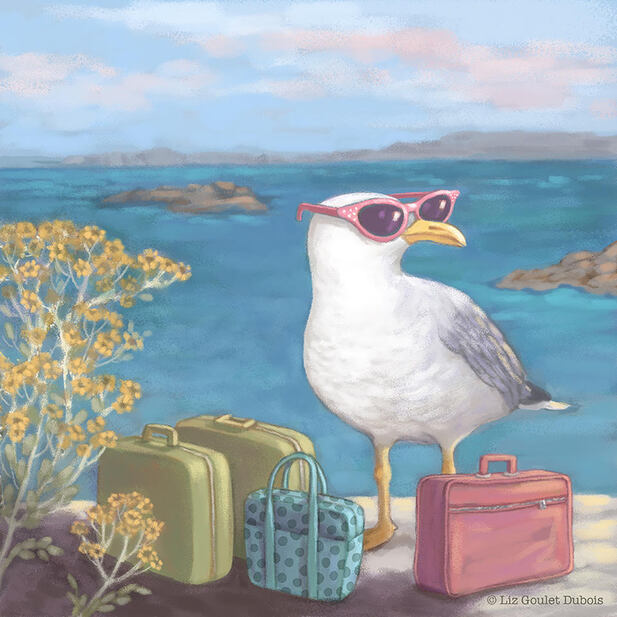
 RSS Feed
RSS Feed